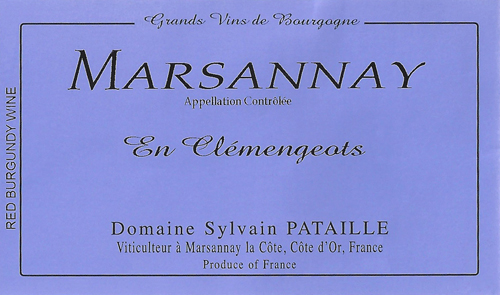Marsannay En Clémengeots
At a Glance
- Size: 1.00 ha (2.47 ac)
- Variety: Pinot Noir
- Vine Age: Planted in 1951, 1989, 2006
- Terroir: Very gentle slope facing east. Red clay soils on Ostrea acuminata. 280-meters elevation.
- Viticulture: Organic certified, biodynamic methods
- Vinification: 100% de-stemmed, indigenous yeast fermentation. Aged for 18 months in barrel (15% new), low sulfur additions only at bottling.
Additional Info
Etymology: Clemengeot is composed of two words:
Cle could come from the word Claie, which comes from the medieval Latin word for wood trellis, CLIDA. CLIDA designates an openwork fence structure with intertwined wood that consists of posts driven into the ground.
Mongeot could be a Burgundian diminutive of ancient French Monge (monk or solitary). Monge —from the imperial Latin word MONAHUS (monk, solitary).
Source: The Climats and Lieux-Dits of the Great Vineyards of Burgundy, Marie-Hélène Landrieu-Lussigny.
Site: En Clemengeot sits at the northern border of Couchey toward the bottom of the slope at 280-meters elevation. The slope is very gentle and faces east. A small combe to the northwest provides cool air.
Geology: The vineyard sits entirely on white Ostrea acuminata limestone. Due to its low position on the slope, it also receives slopewash from the rocks just above, including the fossiliferous Calcaire a entroque (crinoidal limestone), and the hard Comblanchien and Premeaux limestones. The aforementioned combe provides alluvial input.
Soil: The soil is approximately 20 cm deep at the top of the vineyard and increases to 40-50 cm deep at the base. It is reddish-brown in color, with about 15-20% small stones (mostly gravels and small cobbles). The clay-rich soil is not too heavy and drains well. This is likely due to the varied mixture of stones provided from upslope, as well as a layer of laves* just below the topsoil.
We are greatly indebted to Brenna Quigley for the geology and physical descriptions.

